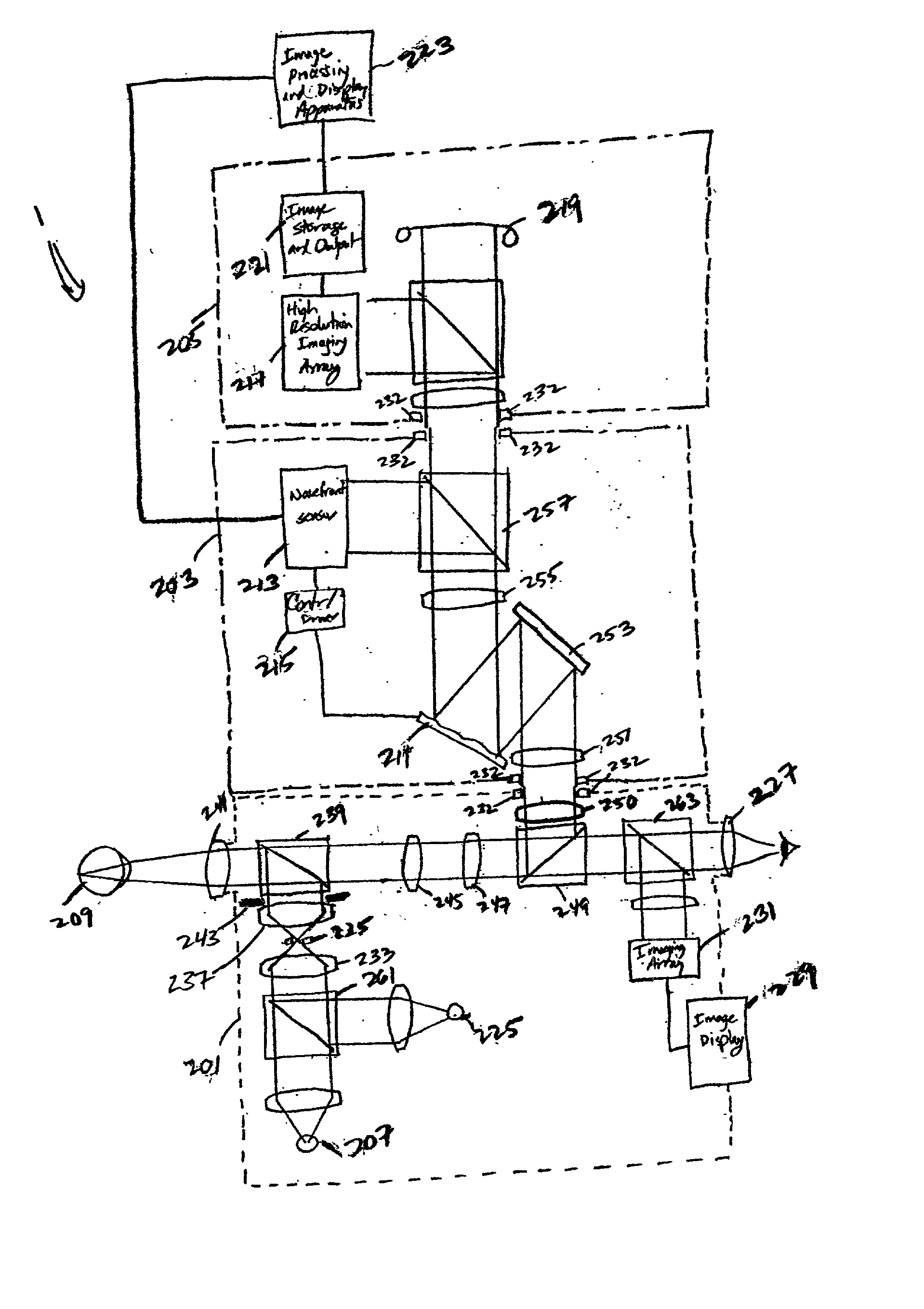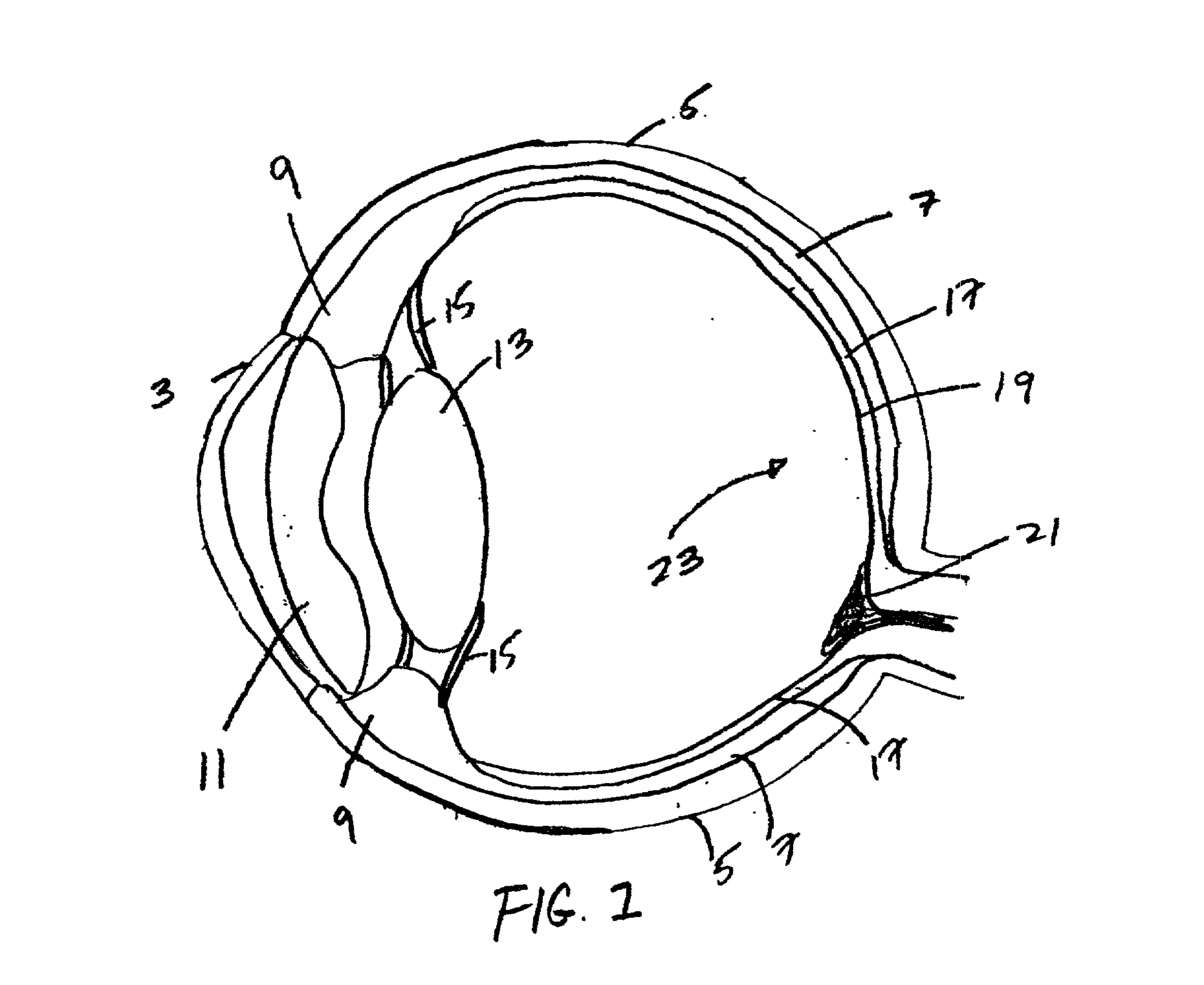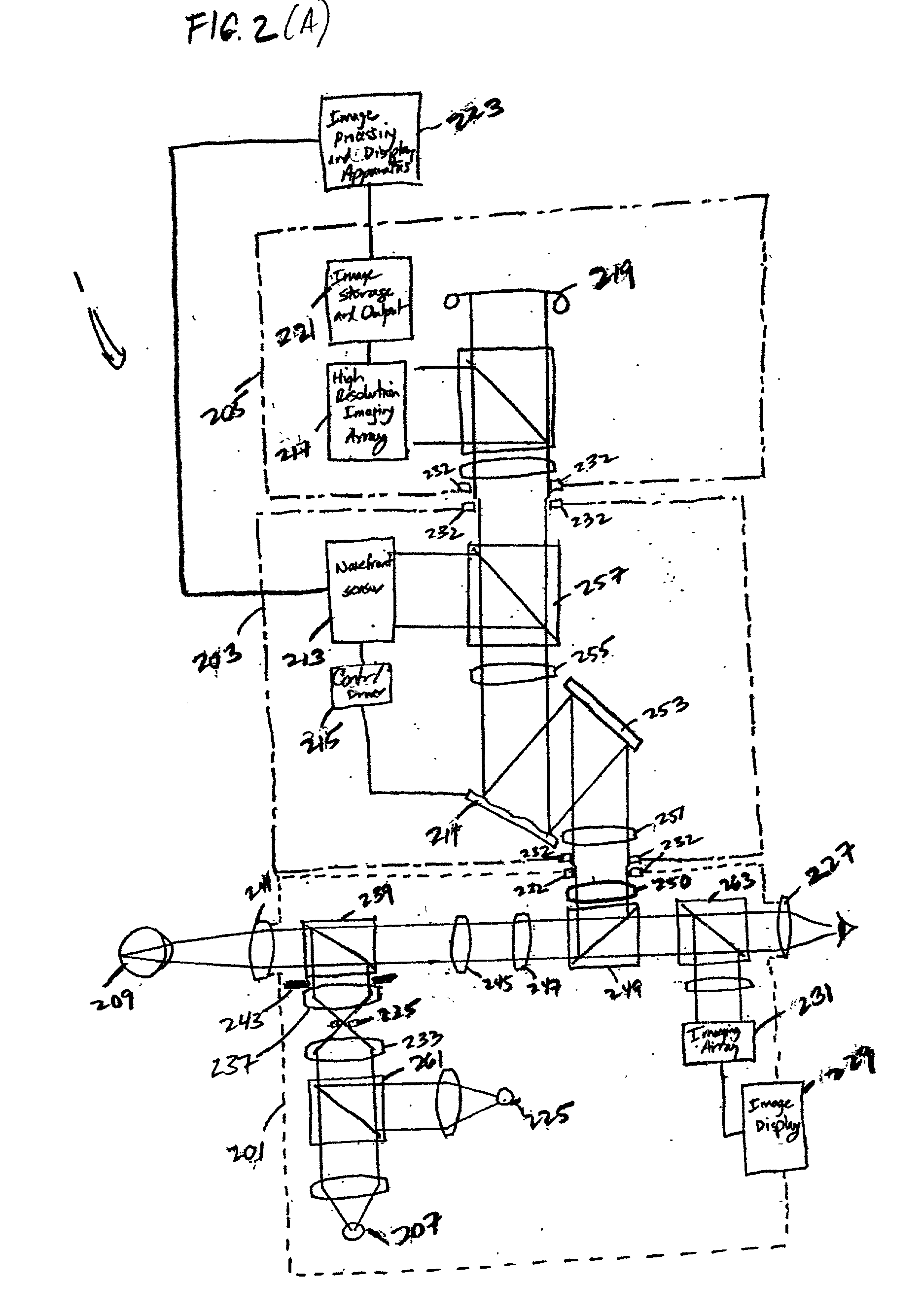Modular adaptive optical subsystem for integration with a fundus camera body and CCD camera unit and improved fundus camera employing same
- Summary
- Abstract
- Description
- Claims
- Application Information
AI Technical Summary
Benefits of technology
Problems solved by technology
Method used
Image
Examples
Embodiment Construction
[0056] Referring to the figures in the accompanying Drawings, the preferred embodiments of the ophthalmic instruments of the present invention will be described in greater detail, wherein like elements will be indicated using like reference numerals.
[0057] According to the present invention, an ophthalmic imaging instrument includes a wavefront sensor-based adaptive optical subsystem that measures phase aberrations in reflections derived from light produced by an imaging light source and compensates for such phase aberrations when capturing images of reflections derived from light produced by the same imaging light source. For descriptive purposes, the wavefront sensor-based adaptive optical ophthalmic imaging instrument as described below comprises a fundus camera; however the present invention is not limited in this respect and is broadly applicable to any ophthalmic imaging instrument that captures images of the eye, including corneal topographer, retinal topographer, corneal ima...
PUM
 Login to View More
Login to View More Abstract
Description
Claims
Application Information
 Login to View More
Login to View More - R&D
- Intellectual Property
- Life Sciences
- Materials
- Tech Scout
- Unparalleled Data Quality
- Higher Quality Content
- 60% Fewer Hallucinations
Browse by: Latest US Patents, China's latest patents, Technical Efficacy Thesaurus, Application Domain, Technology Topic, Popular Technical Reports.
© 2025 PatSnap. All rights reserved.Legal|Privacy policy|Modern Slavery Act Transparency Statement|Sitemap|About US| Contact US: help@patsnap.com



